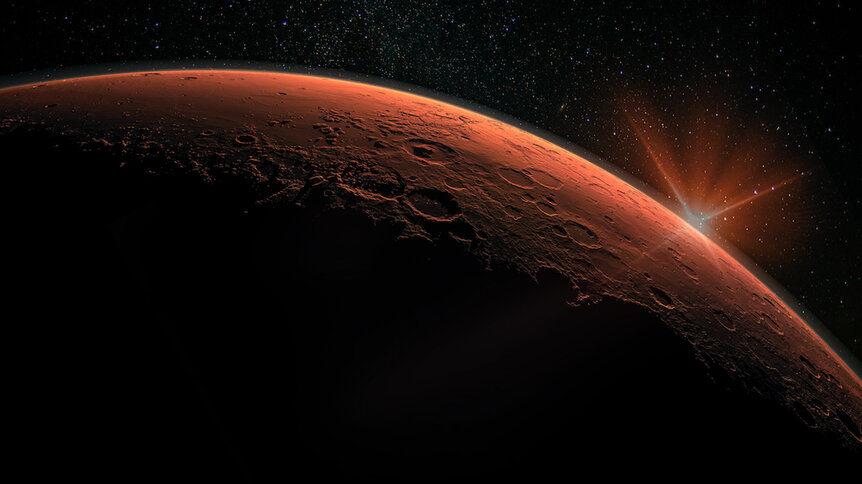Radiation Could Limit Mars Missions to Four Years
Space radiation is less cool than it sounds.

Pitch Black's Richard B. Riddick (Vin Deisel) spends his life hopping from one planet to the next, keeping one step ahead of death. To watch his story, you might suspect he's on the run from the law, but he might actually be keeping ahead of the clock. Scientists have discovered that space travel comes with time limits for human (and Furyan?) travelers. Unless you're a robot, like NASA's Opportunity rover, you might not be able to survive in space long enough to get anywhere interesting, and that might pose a problem for humanity's grand plans of extended deep space missions.
A crewed mission to Mars, for instance, would take approximately two-years roundtrip. Because of the way Earth and Mars move along their orbits, it’s difficult to shave time off of that mission without making much faster spaceships. From a certain point of view, it might make more sense to send Martian explorers for extended stays. If you’re looking at two years of travel time, you want the stay to be worth the hassle. A new study, however, suggests that missions to Mars shouldn’t last more than four years and should launch only at certain times, in an attempt to minimize the risk of space radiation.
There are a lot of challenges when it comes to putting people on another planet. Getting them there alive and in good spirits is no small task, and it’s only the beginning. Once they touch down on Mars, they’re going to need shelter from the elements, air to breathe, food to eat, and water to drink, all of which will have to be produced on site or brought from home. Scientists all over the world are working to solve those problems in advance of a crewed Mars mission, but anyone leaving the relative safety of Earth will also have to contend with deadly radiation from space.
For More on Mars:
Giant "Hidden" Volcano Taller Than Everest Discovered on Mars
NASA Discovery Could Mean Mars Had Life-Supporting Hydrothermal Vents
NASA Seeking Applicants for Next CHAPEA Simulated Mars Mission
Leaving Earth's Invisible Radiation Shield
When you’re on the Earth, you’re protected from space radiation directly by the planet itself. Anything coming at you from one side of the cosmos will hit the planet before it hits you. You’re also protected less visibly by the Earth’s magnetic field, which behaves as a sort of force field, shielding you from cosmic energy blasts. Astronauts in low-Earth orbit also benefit from the same protections. Even 250 miles above the surface, they’re surrounded by the planet’s magnetic field with the Earth at their backs, but once you leave the Earth’s magnetosphere, you’re exposed to the full might of Solar Energetic Particles (SEPs) and Galactic Cosmic Rays (GCRs).
According to the study, published in the journal Space Weather, the intensity of both types of space radiation are driven largely by solar activity, at least within the boundaries of our solar system. There is a corresponding ebb and flow to the amount of each type as the Sun moves through its 11-year solar cycle. When the Sun is at solar maximum, we see more SEPs and fewer GCRs. The drop in GCRs is the result of additional magnetic shielding from the Sun itself, during maximum. The opposite is true when the Sun is at solar minimum.
Researchers ran simulations, crunching the numbers on the safest time to leave the planet for a Martian road trip. They recommend a launch date at or near solar maximum, when the Sun is at its feistiest. That will give astronauts the greatest natural protection from cosmic rays. With optimal shielding, they calculate you can safely have a four-year mission before sliding back into the protection of the Earth’s magnetosphere.
Counterintuitively, adding more shielding doesn’t necessarily extend mission times and, in fact, can increase the dose received by astronauts inside a craft or building. That’s because of secondary radiation produced by interactions between energetic GCRs and the shielding itself. Importantly, the study only looked at commonly used aluminum shielding. Existing and emerging composite materials may offer improved shielding and longer flight times.
Unless we find a solution, our intergalactic adventures might be limited to the movies. Catch Pitch Black, available from Universal Pictures.
Originally published Jun 6, 2023.





























